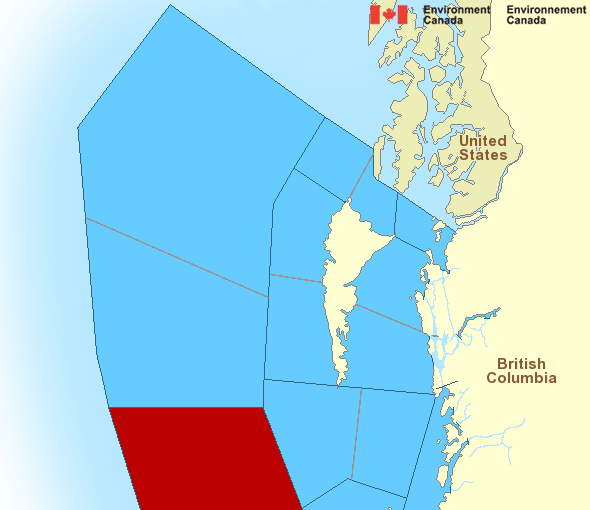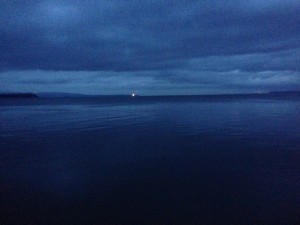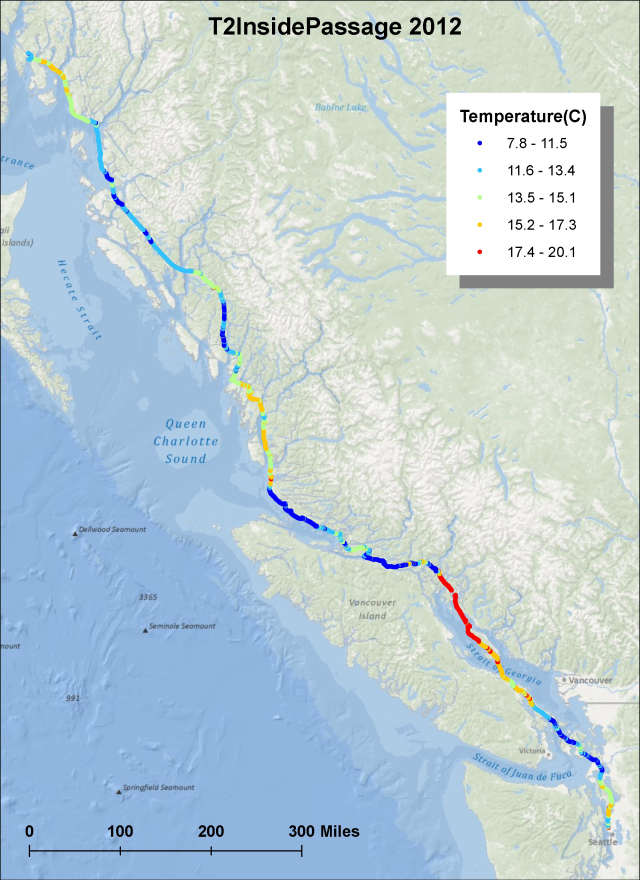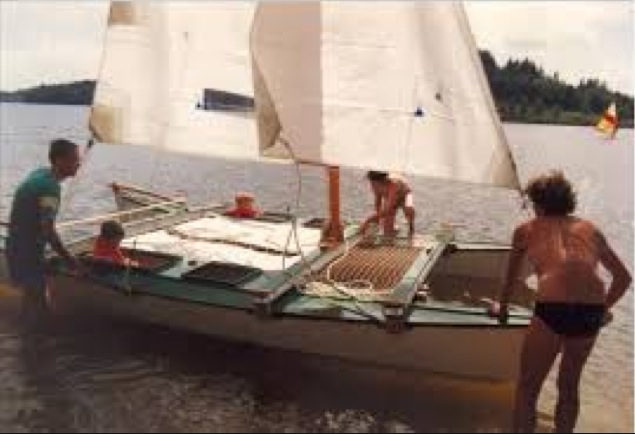If you haven’t listened to Jake’s introduction of the R2AK to the City of Ketchikan, hear it here….
http://www.krbd.org/2015/01/08/engineless-boat-race-with-finish-in-ketchikan/
If you haven’t listened to Jake’s introduction of the R2AK to the City of Ketchikan, hear it here….
http://www.krbd.org/2015/01/08/engineless-boat-race-with-finish-in-ketchikan/
You can’t go on one of these types of adventures without a bunch of gear. We are making some, we are modify some and of course some works so well we can use it as we buy it – off the shelf. Right now we are in full test mode trying out this fabric versus that fabric. Sleeping in wet gear and getting some rest. Concocting meals, figuring out ways to cook, how to start a fire when you you’ve gone hypothermic – yes we are inducing it and then trying to recover but under controlled conditions. We’ll be posting more on this topic later with both raw data and our takes on what works best. We have spent years being adventurers so we have our biases. We like these guys not just for their great gear and willingness to work with us on setting issues right but also for their excellent film series.
The question is not why but how.
Tough day for mariners on the northern BC coast!

What does all that red color mean? Since we’re not in the recreational boating season, it means average or mean wind speeds (not just gusts!) greater than or equal to 34 knots!
From the FAQ of Environment Canada:
Synoptic warnings include the following four categories of winds and freezing spray:
- Strong wind: Wind speed of 20 to 33 knots inclusive. Strong wind warnings are only issued for coastal or inland waters during the recreational boating season.
- Gale-force wind: Wind speed of 34 to 47 knots inclusive.
- Storm-force wind: Wind speed of 48 to 63 knots inclusive.
- Hurricane-force wind: Wind speed of 64 knots or greater.
- Freezing spray: Ice build-up rate on marine infrastructure 0.7 centimetres per hour or faster.
Note that synoptic wind warnings apply to the mean wind only. Synoptic wind warnings are not issued for wind gusts that happen to reach warning criteria.
Well call it coastal sailing if you wish. I’d like to see these bad boys and girls take a shot at Seymour Narrows in these boats…..
We should all fill in one of these before we leave on the R2AK race! Or any other trip on the water. How well can your friends and family describe you and your boat from memory after all. Probably not well enough. Suspecting that the Northwest Maritime Center will have their own set of information requirements on each entry. But that is just one event for a few weeks this coming June 4th.
Plans change when you sail/row/paddle small boats. The weather changes. The spot you found to camp is just too sweet to only spend one day at. Or you may be spending the next 6 hours waiting for a tide you got just a bit wrong. You ran into other like minded small boaters and do an impromptu plan change to travel together.
Those you leave behind ashore may start to wonder where you are. Sometimes having a fixed plan is just not possible or your tracker beacon stops working (been there!) or your battery dies on your iPhone or there is no signal and the Find Friends app stops sending (that happens!).
It was almost easier before all those things existed but you did need to add a widow’s walk on top of your house. Regardless, the basic info of a float plan is a good start as is a broad description of where you will be. Sometimes getting a little bit lost is exactly what your plan is. Sometimes the rescuers might benefit by narrowing down the size of the haystack. From my professional experience as a SAR vessel commander, knowing who and how many on board, size, type and description of the vessel and a general idea of where the over due party might be usually increased the chance of a happy outcome. We don’t mind searching for you even if all was well. We chock it up as training.
http://www.floatplancentral.org/

I’m looking for inspiration. Well, I could actually use a little perspiration. That would mean I wasn’t so flip’in cold as I am at the moment. I poke my soggy left arm with my equally not dry right index finger. Yup! Cold! Yup! Wet! Yup! Rain!
The Skye seems to have no problem with perspiration. It’s been perspiring hard for the last 4 days. Continuously! How long can this uphill grind it’s on be? Well it’s not that bad. Four days is a bit of an exaggeration. Really it’s only been perspiring the last 3.84 days. 95.7 hours to be exact. So far! Must be one hell of a race up there! The Skye is working hard. Can you back off on the pace buddy! We could use a little blue sky down here for the R2AK. Everything is nice a wet! ALREADY.
Did I mention it’s cold?
Well at least we have a wind at our back or we did. We being; me, my teammate Scott, and The Boat. For now we just wallow onwards on an oily slick grey surface. Banks Island is out there somewhere to my right. Or I’m hoping it is. Otherwise I’m on my way to Haida Gwaii. “Stick to the team motto” the boat reminds me. Just keep going! So I’m now stripped down as to keep my clothes dry and I’m on the cranks. Time to drive! “That’s another one of your motivational sayings”, the boat smugly pipes in. Yah right! Right now I could just use to be a little warmer. Like in a warm bed – asleep. Or in front of a fire having a good read and armchair dreams instead of this s**t!
Anyone bother doing the calculation as to how much power a human body puts out in horsepower? Try zero point two horsepower if you are in shape. At best, unless you are Frankie Tour de France with mega thighs, an entourage in tow to baby you and a German doctor with a little magic pill. Then you get to gloat about your three to four hundred Watts of raw power. We mere mortals put out 60 to 120 Watts. Woohee! Them – point five thee seven horsepower! I trained for this. For months dammit! Why can’t the boat just get over it and go a little faster? “So can we put me down for say 150 Watts”, I ask the boat. “Sustained”, it asks, a little exasperated. “We can all dream right?” I say under my breath. The boat hears me and says, “Stop griping and start motivating. How else do you think you’ll get warm?” “Point two HP”, I think. I looked it up myself before getting in this situation. Hmm! I recall thinking, “that’s not much now is it!” I promptly started cutting the tags off my gear to lower the team weight. Whatever, the sponsors can suffer from the lack of cleverly hidden tags on the inside of my clothes. Publicity – pfff!
There’s a very slight tail wind so I can justify the umbrella over my head. You know – for the rain. Well, I’m rationalizing it. Oh it seemed like a good idea to bring it at the time. “We can bring less sunscreen” I said to my Scott, “we’ll save weight. No comment from The Boat. “It’ll keep the sun off our heads as we speed north towards the mirage of a prize”, I justify. “After all can’t I also consider it to double as a sail”, I ask the boat? Ok, Ok, focus on where you are headed. This is a race and not just any race; this is the inaugural year of the R2AK – Race to Alaska
Did I mention the bugs? No! What was I thinking? Bugs come in an endless variation of shape, size and nastiness. I’ve never met a bug that bit you and then you felt better. Only worse. Where did evolution go wrong? Yes officer, I’m drunk as a skunk! Got caught out in the woods without any protection and those rum-squitos sure got a piece of me! Took me hours to get off the sand bar. Low tide. I’ll make sure it doesn’t happen again officer. Thanks for letting me row on. The boat reminds me “hey stop that. No daydreaming! You are here on a mission. You signed up for this! Now get to work!”
Why is the boat talking to me? I shouldn’t have looked for inspiration on THAT shelf of my nautical bookcase. The armchair sailor bookshelf. “I wonder”, I said to myself at the time, as I pulled down a slim small volume, “maybe McGrath will have some words of wisdom.” Damn Foole! What was I thinking when I started reading stories from Tom McGrath’s Voyages of the Damn Foole to the boat last winter. Now it talks back to me. And not always that nicely I might add.
“Hey Boat!” I say, “if you’re so clever, why don’t you talk Skye into backing off the perspiration and upping the breeze. I could use a little help here!” “Suit yourself” it says “Skye thought you needed a little exercise. You know to get warm.”
The wind comes up. Southwest this time. For the moment, Scott and I sail on. The others are out there somewhere. After all there’s a race on and we are bearing down on our competition as the winds change to our advantage.
What’s going on?! Is it last week’s record rainfalls, the crazy northwesterly that blew through on their tail, the minor earthquake recorded off Vancouver Island last month, or is the Salish Sea finally just fed up?
What I see ahead reminds me of the Smirnoff ad that Roz Savage www.rozsavage.com posted a link to on her blog a few years ago: a deckhand throws his empty beer can over the ship’s rail and Neptune revolts, lifting all the trash and sunken ships and planes of the ages off the bottom and throwing it all back up to where it came from.
The waters ahead are littered with logs, a tree with its roots intact, what looks like the remains of someone’s picnic picked up by a wave mid event and reset at sea and a clump of kelp with a large block of polystyrene foam trapped in the middle. Two gulls are perched on it eying each other as the foam bobs along with the current. All this in a ragged line playing off to the northeast.
The wind, on our port quarter, pushes us rapidly towards this barrier. How do I get through? Half an hour ago we had to stop to free a plastic shopping bag from our rudder. Our speed dropped precipitously from 21 kph to seven as the bag hooked the rudder’s heel and then opened like a sea anchor set by the Pardey’s. I yell to Scott who is dozing off shift “trash line!” He jumps up and is up the mast in seconds gazing out like an Arctic ice spotter looking for a way through. “It’s bad” he yells, “really bad!”
I don’t want to get stuck, I think, recalling a recent night sail with my friend Andy that put us and my boat Tsunamichaser, in a massive raft of trash and debris from which it took over an hour to extract ourselves as we drifted towards the breakers on the eastside of Lopez Island. Or the two days my girlfriend and I spent extracting our Westsail 28 from the sea vegetable and leftover detritus soup that trapped us in the hurricane hole off Winter Harbour up Vancouver Island’s west coast years ago.
The added weight of Scott aloft sends a slug of seawater over the deck and into my face. Wow that water is warm, I think. I look at our seawater temperature read out; 18.3c. We have been continuously logging sea temperatures since leaving Port Townsend three days ago. A degree higher than the temperatures that Traci C and Tracy L recorded on their passage to Ketchikan in 2012 but not as warm as our fellow sailors Mike and Catherine documented last summer off Lund.

http://t2can.wordpress.com/
“How are we going to get through?” I yell back.
“Tack” Scott yells. “Tack NOW!”
Tiller over hard, we go through decks level, the sail momentarily shakes as the pressure eases and then the snotter comes tight on our Pacific rig as we take off on a new course. There!, I see the gap Scott has seen. Between an up surging boil full of life and nutrients and the adjacent spinning tangle of debris – a clean line. I drop in like a surfer in the right spot on the perfect wave who with two quick strokes takes off down the waves face. Like the same surfer entering “the green room” my hand momentarily trails in the water – cold shock! A quick look at the temperature readout confirms the change, it’s 6c.
“Thermocline!” I yell. “It was all because of a massive thermocline!”
I’m reminded of how hard science can be. What we observe right now might not be what we think it is. We get to circle the sun a limited number of times in our life, yet the cycles of life are long and ever changing. Is it safe to draw any conclusion? Even after a lifetime of observation? Where I sail right now there was once a thick sheet of ice. What would I think if I woke tomorrow to that! The land has changed. We humans have always had an effect on the landscape but are we bigger than the Pico de Fogo volcano that is reshaping Cape Verde today? What about a streaking meteorite colliding with our planet. One day it’s like it has always has been the next very different. If we knew it was coming what could we do? A thousand years ago we would have looked skywards in awe of the light that wasn’t supposed to be there. But it’s the slow incipient change that we have wrought over the last few (insert ten, hundred or thousand – your choice) years that might matter now. Many small unmeasurable changes hurling us towards a tipping point.
For the moment, Scott and I sail on. The wind blows from the northwest. The others are out there somewhere. After all there’s a race on and we are bearing down on our competition as the winds change to our advantage.
On a fateful “Tiki Tuesday” — September 23, 2015 — we decided to take the plunge and enter the Race to Alaska. What a great chance to challenge ourselves in some of the most beautiful seascapes known to sailors! Add the intrigue of finding a design that would be optimal for human and/or wind power in the complex marine environment of the British Columbian coast, and we were hooked. Plus, the process of getting ready to race would definitely get us both more physically fit! Maybe we would get really hardened by the training and end up reversing the feats of The Sea Runners — those hearty Scandinavian canoeists who made it from Baranof Island to Astoria back in the mid-19th-century?!
For the first week we thought a lot about whether it should or could be done in a Hobie 16′ or 18′. We were pretty inspired by Matt Sornson’s video about Minor Threat — their 2013 bid to win the Everglades Challenge by sailing and paddling a Hobie 16′ — especially the part where Sailor Jerry boosts morale (3:02).
We tried sailing a Hobie 16′ out at Sail Sandpoint and quickly had a lot of questions:
So we dried off and thought about what fundamental goals we had for our R2AK boat. We settled in on 2 key ideas:
This led us down to the UW/WAC yard to visit the Tiki 21′ (Scott’s first Wharram) where we considered whether we could reduce its weight and windage sufficiently by replacing the rigid cockpit platform with a net like Rory did on Cooking Fat, and maybe by cutting its cabins off flush with the decks. Even with such changes, though, we realized it would a big boat for 2 and would still weigh a few hundred kilos unloaded. Could a different Wharram offer just enough shelter for a two-person crew and be much less massive, enabling meaningful movement by a single person?
Then we saw this photo of a Wharram Hitia 14 which weighs in (unloaded) at only 86 kilos.

It has awesome sailing speed and displacement, but looks just about as wet and unaccommodating as the Hobie 16′.
At last, we learned that the Hitia 17′ is plenty fast (15 knots, or 28 km/hr, steady on a reach in SF Bay) and has little holds or lazarettes in each hull. Most people use these holds for storage and sit on top of their hatch covers while sailing, but others were innovators and got down inside the holds themselves:

This helped us realize that the bulkheads forward and abaft of these holds were just about as far apart as we are tall. Perhaps with some modification of the central bulkhead (#4), the Hitia 17 could accommodate a sleeping human?
And thus, the dream of Manu-o-Ku was born…